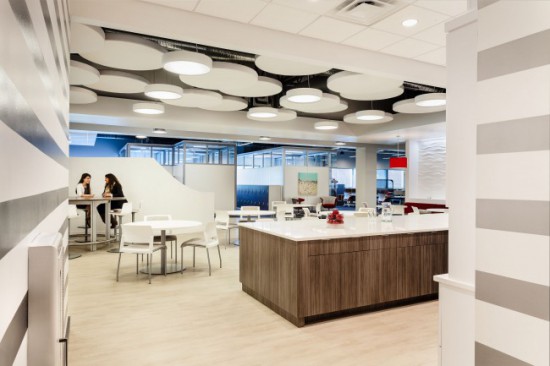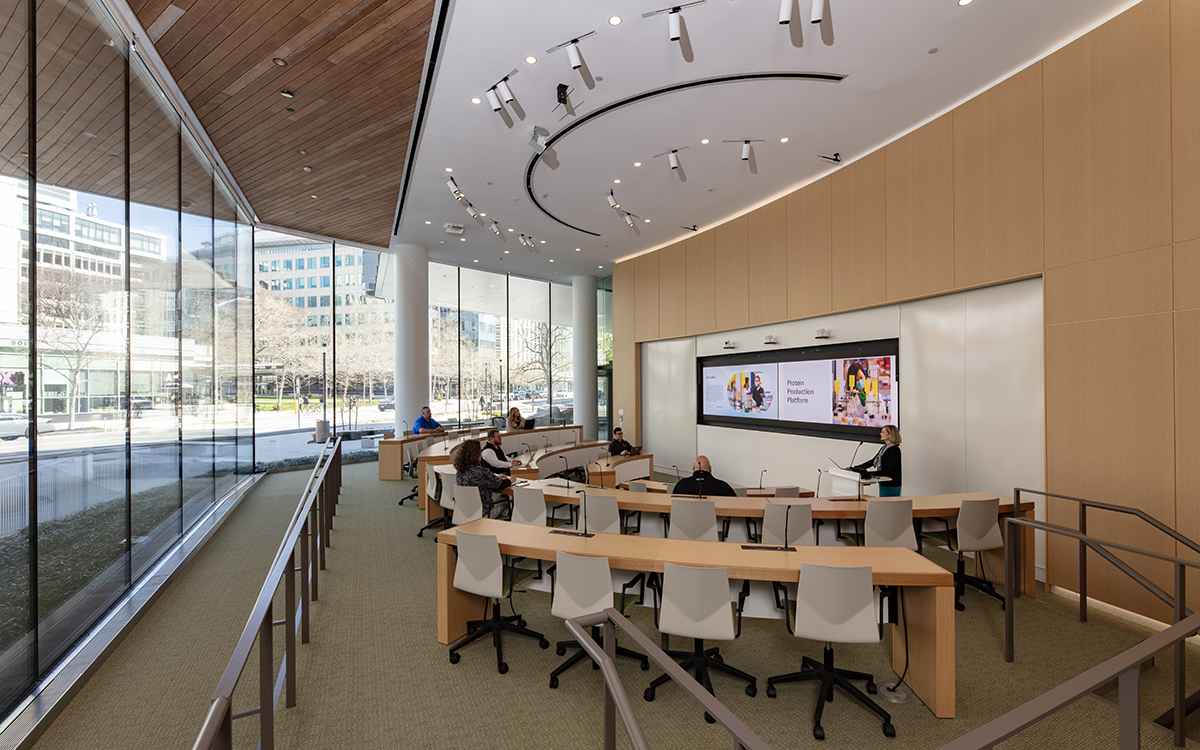Survey says… Lack of sound privacy is one of the biggest complaints in open plan offices, in fact 50-60% of employees cite it as the predominant frustration in the workplace. Not only that, the same researchers found that “the loss of productivity due to noise distraction” doubled in the open plan office as compared to private offices. And yet, with thoughtful space design, there are many ways to mitigate noise in the open plan office. Let’s look at 3 common acoustic privacy issues and see how we can solve them! And as an added bonus, don’t miss the glossary of acoustic terms at the end of the post.

Challenge 1: Sound Transfer Through Walls
Where:
There’s nothing worse than trying to have a private conversation in an enclosed space and feeling like your co-workers can still hear every word of your conversation. In the open plan environment this can occur in any number of situations but is prevalent between resident workstations and conference rooms or between private offices and conference rooms. Or for example a phone booth…that isn’t so private.
Solutions:
> Use demountable walls that have a high STC rating. Here are the STC ratings of some of the architectural products in our portfolio:
V.I.A. – STC 52 max
Maars String2 – STC 50 max
Maars Lalinea – STC 48 max
Maars Panorama – STC 47 max
Steelcase Privacy Wall – STC 45 max
> Consider using sound clouds on the ceiling to absorb ambient noise in the open plan. They can be highly architectural and actually add to the design of the space!

Relevant Ratings: STC, CAC and NRC

Challenge 2: Reverberation / Echo
Where:
Reverberation can be problematic in larger enclosed spaces like conference rooms, training rooms or classrooms. The sound bounces around hard surfaces, so naturally installing softer more absorbent materials in this type of space can help dampen the noise.
Solutions:
> Utilize acoustic materials on the ceiling or employ architectural sound clouds.
> Design enclosed spaces with sound absorbent materials such as carpeting or even consider mounting sound absorbing panels to the walls to look like artwork.

Image courtesy: BAUX
Relevant Ratings: NRC

Challenge 3: Open areas too noisy, no privacy
Where:
In the open office around resident workstations or touchdown stations, the noise can be overwhelming.
Solutions:
> Lower your partitions. It’s all about psychology. When the panels are lower, or you choose glass panels, people are more apt to keep their voices down. The higher the panel the more they falsely equate visual privacy with acoustic privacy.

> Create quiet zones for people that need focus time. Preferably with both visual and acoustic privacy built into the design.
> Also, provide areas where collaboration and socializing are encouraged – and consider putting sound clouds or sound shielding in these areas.
> Increase the ambient noise with sound masking systems. This technology creates an engineered sound that makes it difficult for people to perceive individual sounds of the same frequency/volume.
Relevant Ratings: NRC and AI
ACOUSTICAL TERMS
Absorption
Occurs when the energy of sound waves enters a surface material rather than being reflected. Many materials are rated by their ability to absorb sounds.
Articulation Index (AI)
Represents how the elements of a space affect the ability to understand speech. Al can be a value between 0 (unintelligible) and 1.00 (perfect clarity).
Ceiling Attenuation Class (CAC)
Indicates the ability of a ceiling panel to reduce sound transmission. Measured in decibels (dB), CAC represents how much sound will be prevented, or attenuated, from transmitting between rooms with a common ceiling plenum. For example, a ceiling panel with a CAC of 40 will reduce transmitted sound by 40 dB. A ceiling panel with a CAC of 35 or higher is considered to offer significant sound attenuation properties.
Reverberation
Is the reflection of sound off of a hard surface.
Sound Transmission Class (STC)
The ability of a barrier to stop sound from passing through it. A material with an STC of 21 will prevent 21 decibels of sound from passing through it.
Noise Reduction Coefficient (NRC)
Measures the degree to which a surface or material absorbs sound. NRC is represented by a number between 0 and 1.00, which indicates the percentage of sound reaching the panel that will be absorbed. Acoustical panels convert sound energy into mechanical energy and as the sound waves impact the material, it responds by vibrating the fibers in the material. The ability of a material to convert sound energy to mechanical energy is measured in a test that provides the Noise Reduction Coefficient or NRC. An NRC of 85 means that the material absorbs 85% of the sound that hits it and reflects back 15%.






